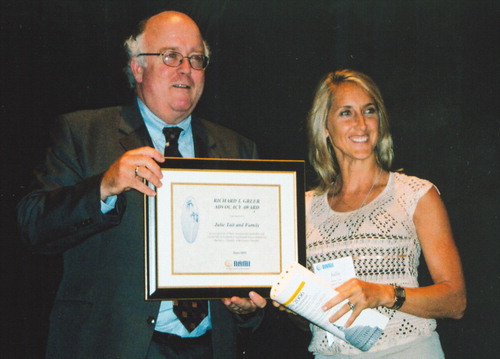Advocate Stops Neighbors From Thwarting Youth Facility's Plans

It wasn't until residents of Overland Park, Kan., learned that the Marillac Center, a psychiatric facility for children and adolescents, was moving to their neighborhood that Julie Tait began to see a side of her neighbors that frightened her.
Tait, a mother of four, was one of many residents to receive a series of e-mails from angry neighbors who protested the facility's impending move from a building in downtown Kansas City to suburban Overland Park in fall 2003.
Marillac provides inpatient and outpatient mental health and educational services to youth aged 6 to 17 who have depression, anxiety, posttraumatic stress, or other disorders.
The residents soon formed an organization called Community Against the Location of Marillac (CALM) and in one letter to members of the community stated, “While we very much appreciate Marillac's role in our society, we oppose the new location choice... right next to our elementary school,” which “poses additional risk to our children's safety and threatens our peace of mind.”
In other words: Not in my backyard.
“These were people who, until then, I had respected and liked and who I considered to be respectable members of society,” Tait told attendees at the 2005 convention of the National Alliance for the Mentally Ill in Austin, Texas, in June. “I began to be embarrassed by their shameful behavior.”
Tait appeared at the convention to accept the Richard T. Greer Advocacy Award and to discuss her efforts to educate her neighbors about Marillac and“ defeat this small but vocal group of citizens in my community,” she said.
CALM leaders held a series of meetings to galvanize local residents against the impending move and to raise money for this initiative in fall 2003, according to Tait, and she attended one of the meetings to try to understand more about their concerns.
Advocate Resents `Bullying'
“I had to leave, because the meeting was not about finding the truth. It was about bullying. It was about prejudice. It was shameful,” she said.
At CALM's first meeting, citizens discussed their fears about relocation of the Marillac Center to the former site of a private psychiatric hospital. About 300 residents attended, and there was a “unanimous community vote to fight Marillac's impending move,” according to CALM documents.
When CALM members soon learned that they could not stop Marillac's relocation, they requested that it remove a treatment program for adolescent males who have been sexually abused and/or who act out sexually. They also tried to stop the facility from expanding to accommodate more classrooms and recreational facilities.
Again, they were unsuccessful. “I wanted people to know I wasn't part of that,” Tait said, referring to her neighbors' negative attitudes about Marillac. So she decided to learn as much as she could about its services and toured the facility at its Kansas City locale.
“While I was there, I saw the faces of these children, watched them play, and watched them learn in the classrooms,” Tait said. “I thought, How can anyone look at these faces and say, `I don't want you here?'”
Hug Elicited Eureka Moment
As Marillac CEO Michael Bowen, L.C.S.W., led Tait through the facility, a young girl in one of the classrooms asked for and received a hug from him. It was a turning point for Tait.
“At that moment I realized that my focus was all wrong,” she said. “Instead of focusing on what I didn't want to be a part of, I needed to focus on what I did want to be a part of.”
In December 2003, she wrote a letter to 600 of her neighbors to dispel myths generated by CALM members about Marillac and its patients in an attempt to allay their fears.
In her letter, Tait stated that she is “passionate about finding the truth.... I could not find one piece of evidence or one fact that supports the idea that there is any palpable risk to our families.”
Though she “fully expected picket lines” in front of her house, response to her letter was overwhelmingly positive, she told Psychiatric News.
Tait began to receive cards and letters thanking her for her efforts. Many asked how they could be of help, and “some people even delivered cookies and treats to my door,” she said.
She returned the favor, but the recipients were the children of Marillac. When the facility moved to the new location in spring 2004, Tait rallied her supporters to bake treats that she delivered by van on the day that the children arrived at the new facility.
“When the kids walked in, they saw this spread of treats before them. It was kind of neat,” she said.
In retrospect, Tait said that having two family members who have struggled with mental illness throughout their lives may have been part of what propelled her in her quest to welcome Marillac to the community.
Her personal experiences no doubt provided her with the empathy that pervaded her 2003 letter:
“Although we would all prefer that a psychiatric facility was not even necessary in this world, it is,” she wrote. Marillac patients“ come from homes that are not able to care for them, or their home environment is not safe for them due to abuse. Marillac is a place that these children consider safe.” ▪



